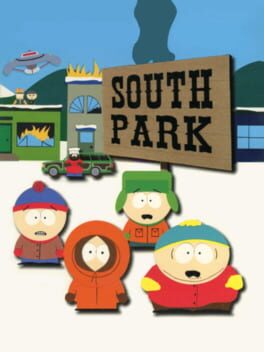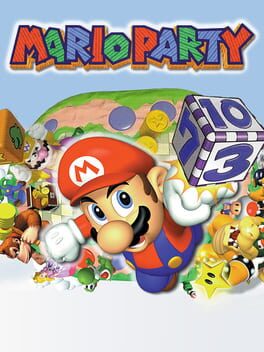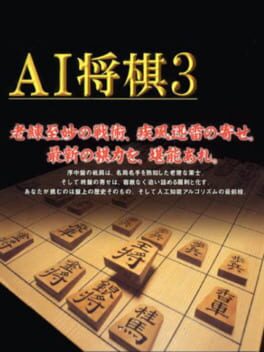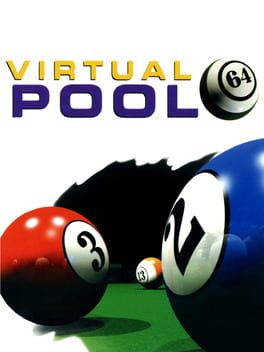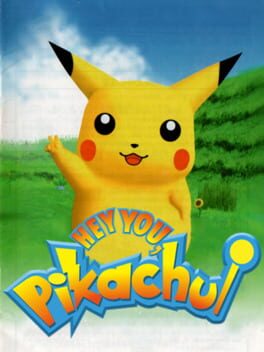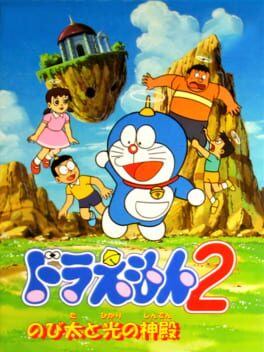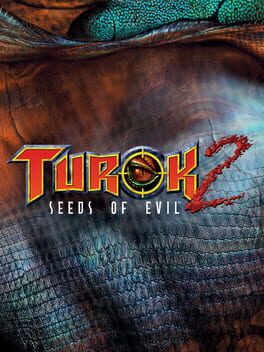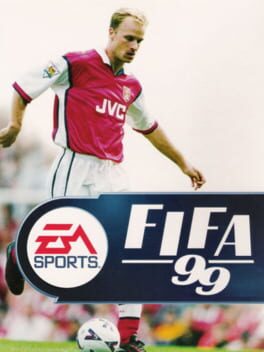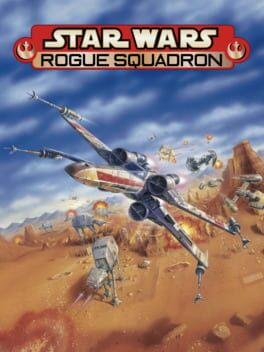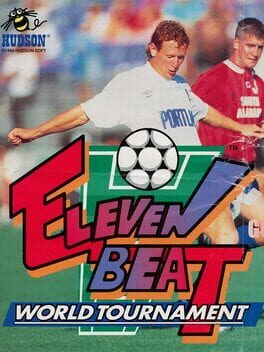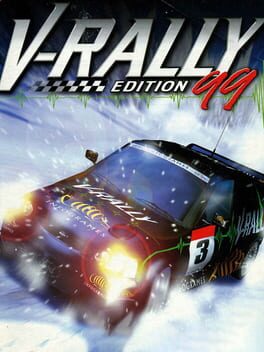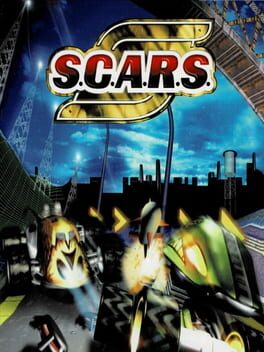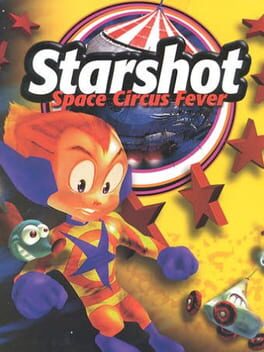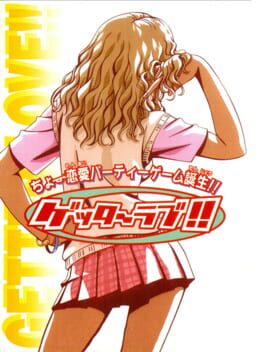Cube1701
1998
When it comes to replaying old games, the worst ones to get through aren’t the bad games, but rather those that are just immensely boring, and unfortunately South Park is one of the most boring games I’ve ever played, so much that I was fed up of it before the end of the first level.
South Park avoids being terrible because it’s based on Turok. It was created by the same company alongside Turok 2, running on the same engine. This also brings along its disadvantages, such as the obscene fog, something that is far more egregious in the straightforward, bland and empty environments of South Park.
You play as Cartman, Kyle, Kenny and the other kid from South Park. A comet is causing strange things to attack the town. Chef provides exposition, and that’s about it for the characters and story (there are a lot of characters in the multiplayer, so it’s a bit odd they’re not used in the story). The voice acting itself is true to the show, but lines are repeated so often (and enemy sound effects are so annoying) that I turned down the voice and sound effects half way into the first level.
You play as all four kids as once. As you swap weapons, you’ll transform into the relevant kid that has that weapon. It’s a really odd system and ultimately makes it feel like you’re not really controlling any of them.
While the kinds of enemies change throughout the game (one type per set of levels that make up an “episode”), they mostly consist of two types. There are the basic minions, which generally just run towards you making annoying noises, you’ll have to kill hundreds in each level. I was bored of killing turkeys before the end of the first level. The only slightly interesting enemies are the toys in the final episode.
Then there are the tanks. They spawn more minions while making a dash for the start of the level. If they reach the start, they’ll disappear and at the end of the level you’ll have to defend South Park from them.
The weapons are the most interesting thing in the game. Some, like the dodgeball, you can even catch to regain ammo. There’s a rocket launcher using cows, an alien dance weapon, a sniper chicken that shoot eggs and other whacky weapons. As this was made so early in the show’s life, it may have been the only part where the developers could be creative.
Ultimately, the incredibly tedious level design makes this a chore to play. The levels don’t have anything interesting in them, and the vast, empty spaces and fog means that even though the levels are liner, there are arrows dotted across the map to show you where you need to go. South Park isn’t terrible, but worse: it’s mind-numbingly boring.
South Park avoids being terrible because it’s based on Turok. It was created by the same company alongside Turok 2, running on the same engine. This also brings along its disadvantages, such as the obscene fog, something that is far more egregious in the straightforward, bland and empty environments of South Park.
You play as Cartman, Kyle, Kenny and the other kid from South Park. A comet is causing strange things to attack the town. Chef provides exposition, and that’s about it for the characters and story (there are a lot of characters in the multiplayer, so it’s a bit odd they’re not used in the story). The voice acting itself is true to the show, but lines are repeated so often (and enemy sound effects are so annoying) that I turned down the voice and sound effects half way into the first level.
You play as all four kids as once. As you swap weapons, you’ll transform into the relevant kid that has that weapon. It’s a really odd system and ultimately makes it feel like you’re not really controlling any of them.
While the kinds of enemies change throughout the game (one type per set of levels that make up an “episode”), they mostly consist of two types. There are the basic minions, which generally just run towards you making annoying noises, you’ll have to kill hundreds in each level. I was bored of killing turkeys before the end of the first level. The only slightly interesting enemies are the toys in the final episode.
Then there are the tanks. They spawn more minions while making a dash for the start of the level. If they reach the start, they’ll disappear and at the end of the level you’ll have to defend South Park from them.
The weapons are the most interesting thing in the game. Some, like the dodgeball, you can even catch to regain ammo. There’s a rocket launcher using cows, an alien dance weapon, a sniper chicken that shoot eggs and other whacky weapons. As this was made so early in the show’s life, it may have been the only part where the developers could be creative.
Ultimately, the incredibly tedious level design makes this a chore to play. The levels don’t have anything interesting in them, and the vast, empty spaces and fog means that even though the levels are liner, there are arrows dotted across the map to show you where you need to go. South Park isn’t terrible, but worse: it’s mind-numbingly boring.
1998
The start of one of Mario’s most successful – and most plentiful in terms of games – spin-offs. Mario Party is a board game combined with a large amount of minigames. The first one is the simplest, but sometimes simple can be best.
The objective is to make your way around the board to find Toad, and then pay 20 coins for a star. Blue spaces give you coins, red ones take away coins and others have varying effects. Everything comes down to the roll of the dice, although there are junctions where you can choose which way to go.
The boards in Mario Party have a few ways which change how you get around the board, but really its all to just randomise everything so that anyone can win.
While the board is how you win, the main enjoyment is the minigames. The kind of space you land on determines your team, which can result in 4v4, 2v2 or 3v1 minigames. The enjoyment of them can vary a lot, but usually the ones where everyone is competing tend to be the best – such as everyone balancing on balls in a small island, everyone having to rush to a mushroom of the right colour, shaping Bowser’s head (based on the Super Mario 64 start screen) and following a shape to cut out an object.
One thing I found quite curious (as I don’t remember it from owning the game) were that some of the minigames are completely co-operative, so you’re all working to get 10 coins. I suppose if someone is near the star and has 10-19 coins, you can attempt to sabotage them, but they ultimately feel fairly pointless.
The 2v2 and 3v1 games do add to the mix really well, and there are solo minigames that can be played from one spot on the board, although they really slow the game down.
One of the biggest issues with Mario Party is how many of the minigames rely on spinning the analogue stick as fast as possible. Not only does this wear out the controllers, but the competition encourages people to try techniques to spin faster – I was one of those dumb kids that blistered my palm due to Mario Party.
The minigame island is a nice option for playing the minigames, although as some can be very luck-based, it can be frustrating losing lives due to doing nothing wrong.
Mario Party is a terrible board game that manages to be fun due to its silliness and mainly the minigames. With the amount of games in the franchise, it’s a shame they never tried to get away from the roll and move mechanic.
The objective is to make your way around the board to find Toad, and then pay 20 coins for a star. Blue spaces give you coins, red ones take away coins and others have varying effects. Everything comes down to the roll of the dice, although there are junctions where you can choose which way to go.
The boards in Mario Party have a few ways which change how you get around the board, but really its all to just randomise everything so that anyone can win.
While the board is how you win, the main enjoyment is the minigames. The kind of space you land on determines your team, which can result in 4v4, 2v2 or 3v1 minigames. The enjoyment of them can vary a lot, but usually the ones where everyone is competing tend to be the best – such as everyone balancing on balls in a small island, everyone having to rush to a mushroom of the right colour, shaping Bowser’s head (based on the Super Mario 64 start screen) and following a shape to cut out an object.
One thing I found quite curious (as I don’t remember it from owning the game) were that some of the minigames are completely co-operative, so you’re all working to get 10 coins. I suppose if someone is near the star and has 10-19 coins, you can attempt to sabotage them, but they ultimately feel fairly pointless.
The 2v2 and 3v1 games do add to the mix really well, and there are solo minigames that can be played from one spot on the board, although they really slow the game down.
One of the biggest issues with Mario Party is how many of the minigames rely on spinning the analogue stick as fast as possible. Not only does this wear out the controllers, but the competition encourages people to try techniques to spin faster – I was one of those dumb kids that blistered my palm due to Mario Party.
The minigame island is a nice option for playing the minigames, although as some can be very luck-based, it can be frustrating losing lives due to doing nothing wrong.
Mario Party is a terrible board game that manages to be fun due to its silliness and mainly the minigames. With the amount of games in the franchise, it’s a shame they never tried to get away from the roll and move mechanic.
1998
The AI Shogi series had yearly releases from 1996 to 1998, each one being on a different platform: the 3DO, PlayStation and then N64. This one has one welcome feature that the previous N64 Shogi games didn’t, and that’s showing the moves each piece can make. It didn’t help me much for actually playing, as I still couldn’t quite tell how my opponents pieces would move.
This shogi game is very basic, though. The biggest visual thing is that you can change the background, and you can choose to play against player 2 or the CPU. The only additional feature is that you can edit the starting position of each piece, so I was able to play a match where my opponent only had pawns. I managed to get a stalemate which, unlike chess, meant that I won.
This shogi game is very basic, though. The biggest visual thing is that you can change the background, and you can choose to play against player 2 or the CPU. The only additional feature is that you can edit the starting position of each piece, so I was able to play a match where my opponent only had pawns. I managed to get a stalemate which, unlike chess, meant that I won.
1998
Virtual Pool 64 doesn’t have a fancy title because is isn’t anything fancy. Instead, it focuses on recreating the game of pool as well as popular. No story mode, no unlockable, no flair – it just sets out on providing you with a fancy pool table, and it’s something the game does really well.
From the “help” available in the menu, I also got the impression that the game was designed to be put in places where people who have never played a game might play it, as it goes as far as explain how a menu works, saying things like “Pressing B will generally go back to a previous menu”.
Graphically, this does a wonderful job at recreating the game, particularly with how perfect the balls look. The table itself is also nicely detailed and the only part that makes it obvious that it’s an N64 game is the room background. The balls react in a very realistic way, so I’m as awful at this as I am with actual pool.
The one oversight for me is that the main pool I’m used to – with red and yellow balls – is not an available game mode, only the “fancier” stripes and dots that I was never a fan of using in real life. It does contain a ton of different rulesets to choose from, though, and you can paly against a friend or a ton of opponents with pun names of varying difficulties.
There’s also the “free style” which lets you set things out how you want – if I really wanted to, I could have had the red/yellow type of pool. This mode also lets you load a ton of tricks shots for you to try and perform.
The controls are quite intuitive, too, using the analogue stick to move the cue. A couple of times I managed to miss the white ball, but perhaps that was due to my accuracy of movement than the game itself.
This is a great playset for people who want digital pool, and it doesn’t try to be anything more.
From the “help” available in the menu, I also got the impression that the game was designed to be put in places where people who have never played a game might play it, as it goes as far as explain how a menu works, saying things like “Pressing B will generally go back to a previous menu”.
Graphically, this does a wonderful job at recreating the game, particularly with how perfect the balls look. The table itself is also nicely detailed and the only part that makes it obvious that it’s an N64 game is the room background. The balls react in a very realistic way, so I’m as awful at this as I am with actual pool.
The one oversight for me is that the main pool I’m used to – with red and yellow balls – is not an available game mode, only the “fancier” stripes and dots that I was never a fan of using in real life. It does contain a ton of different rulesets to choose from, though, and you can paly against a friend or a ton of opponents with pun names of varying difficulties.
There’s also the “free style” which lets you set things out how you want – if I really wanted to, I could have had the red/yellow type of pool. This mode also lets you load a ton of tricks shots for you to try and perform.
The controls are quite intuitive, too, using the analogue stick to move the cue. A couple of times I managed to miss the white ball, but perhaps that was due to my accuracy of movement than the game itself.
This is a great playset for people who want digital pool, and it doesn’t try to be anything more.
1998
Hey You, Pikachu! took almost two years to make it from Japan to the USA, and never came out in Europe. This was mainly due to the Voice Recognition Unit that came with the game – which is essentially a microphone were you could say words for Pikachu to understand.
This may sound like something trivial now, but it was very advanced with the times. That said, many people (especially adults, as the recognition was centred around a higher pitch) had issues with it. Using a modern microphone in an emulated version of the game seems to be a bit better, although I still had an issue with some words.
With Hey You, Pikachu getting fairly negative reviews, I was surprised as to how much I enjoyed it. For how much it cost when new, I can definitely see why, but the game reminds me a lot of more recent downloadable titles which are little stories with some gameplay.
Professor Oak gives you a device that helps you speak to a wild Pikachu, who you quickly befriend. You hold the Z button to speak, then your words will travel in a bubble to Pikachu. You have to grab his attention before you give him commands, and he’ll only understand certain words (which are highlighted in red).
At the start, the controls are quite basic. The camera is locked on Pikachu and you can move about relative to him. In the starting section, you can look after some Caterpies, explore a field, help Bulbasaur prepare a meal and do some fishing. You’ll wake up, meet Pikachu outside, go on an adventure and say buy to him.
On thise adventures, Pikachu will ask about items, ask for advice on what to do with them and be very curious. After a while, you’ll be able to ask Pikachu to stay at home with you.
From this point on, you get to choose what to do, you can replay the stuff from the first chapter, or do a bunch of new activities, such as guiding a blindfolded Pikachu towards a pinata, finding lost Poliwags and watering some Oddish. If you do well enough at the pinata game then you’ll also gain access to an island for treasure hunting.
You also have a bit more freedom of movement and gain access to an inventory to store items, some are permanent items while others are sold at the end of the day. You can also play some little minigames, like tag or a name that Pokémon game on the N64 in your room.
Once you’ve done everything you need to here, the third chapter will start. You’ll be introduced to some new view modes: one which locks the camera onto Pikachu and another that lets you look up and down. Now Pikachu will understand what you’re pointing a as well, so you can give more specific instructions. The increase in control complexity was definitely a way to not introduce too much to kids at once, although, annoyingly, returning to older missions will remove these abilities.
The third chapter is mainly more difficult versions of what we’ve seen so far. A diglett will try to trip Pikachu up, a Haunter is roaming the lake and the Caterpies are much hungrier than before. The Caterpie mission was very difficult to begin with (you have to get Pikachu to thunderbolt trees), but I realised that I could get the food myself and help that way.
To progress you need to have performed certain tasks in the various missions, including fully completing the Caterpie ones. Professor Oak will ask you to send Pikachu on his own mission, and you’ll follow him in a cardboard box as you see him remember what you’ve taught him.
After this is done, there’s a surprisingly emotional ending (that also kind of makes Pokémon Trainers look bad).
Hey You, Pikachu is a cute little adventure. While the graphics are fairly low quality, Pikachu himself is extremely well animated and the Pokémon having their show voices is nice to hear in a game. The voice control was a novel idea at the time, but isn’t something people like using that much, due to how few games support voice control when it’s much easer to do now.
I really enjoyed my time with Pikachu, and it was a fun, short experience.
This may sound like something trivial now, but it was very advanced with the times. That said, many people (especially adults, as the recognition was centred around a higher pitch) had issues with it. Using a modern microphone in an emulated version of the game seems to be a bit better, although I still had an issue with some words.
With Hey You, Pikachu getting fairly negative reviews, I was surprised as to how much I enjoyed it. For how much it cost when new, I can definitely see why, but the game reminds me a lot of more recent downloadable titles which are little stories with some gameplay.
Professor Oak gives you a device that helps you speak to a wild Pikachu, who you quickly befriend. You hold the Z button to speak, then your words will travel in a bubble to Pikachu. You have to grab his attention before you give him commands, and he’ll only understand certain words (which are highlighted in red).
At the start, the controls are quite basic. The camera is locked on Pikachu and you can move about relative to him. In the starting section, you can look after some Caterpies, explore a field, help Bulbasaur prepare a meal and do some fishing. You’ll wake up, meet Pikachu outside, go on an adventure and say buy to him.
On thise adventures, Pikachu will ask about items, ask for advice on what to do with them and be very curious. After a while, you’ll be able to ask Pikachu to stay at home with you.
From this point on, you get to choose what to do, you can replay the stuff from the first chapter, or do a bunch of new activities, such as guiding a blindfolded Pikachu towards a pinata, finding lost Poliwags and watering some Oddish. If you do well enough at the pinata game then you’ll also gain access to an island for treasure hunting.
You also have a bit more freedom of movement and gain access to an inventory to store items, some are permanent items while others are sold at the end of the day. You can also play some little minigames, like tag or a name that Pokémon game on the N64 in your room.
Once you’ve done everything you need to here, the third chapter will start. You’ll be introduced to some new view modes: one which locks the camera onto Pikachu and another that lets you look up and down. Now Pikachu will understand what you’re pointing a as well, so you can give more specific instructions. The increase in control complexity was definitely a way to not introduce too much to kids at once, although, annoyingly, returning to older missions will remove these abilities.
The third chapter is mainly more difficult versions of what we’ve seen so far. A diglett will try to trip Pikachu up, a Haunter is roaming the lake and the Caterpies are much hungrier than before. The Caterpie mission was very difficult to begin with (you have to get Pikachu to thunderbolt trees), but I realised that I could get the food myself and help that way.
To progress you need to have performed certain tasks in the various missions, including fully completing the Caterpie ones. Professor Oak will ask you to send Pikachu on his own mission, and you’ll follow him in a cardboard box as you see him remember what you’ve taught him.
After this is done, there’s a surprisingly emotional ending (that also kind of makes Pokémon Trainers look bad).
Hey You, Pikachu is a cute little adventure. While the graphics are fairly low quality, Pikachu himself is extremely well animated and the Pokémon having their show voices is nice to hear in a game. The voice control was a novel idea at the time, but isn’t something people like using that much, due to how few games support voice control when it’s much easer to do now.
I really enjoyed my time with Pikachu, and it was a fun, short experience.
While the first N64 Doraemon game was a 3D platformer, this is more like Goemon: a game with an overworld and dungeons, but the dungeons being more focused on platforming when compared to Zelda.
It starts off when Doraemon, the blue robot cat, and his friend when one of them (Nobita) messes with a strange crystal, breaks it and starts the process of the end of the world for a fantasy land, so they need to restore the crystal to fix their mess.
You can no longer change characters on the fly, instead you can only swap characters at certain points in the story. Due to this, the different abilities of each character are now completely removed, only having a very minor damage increase when using one weapon.
Jumping is extremely stiff. Once you jump, you have very little leeway over your movement, and the game’s camera often tries to “help” and makes you jump off in a completely different direction than our intention.
The overworld is also extremely bland, made up of empty spaces. The more top down camera view means you can never see much, either, so a lot of the time is spent looking at mostly a ground texture. Most of the overworld is a straightforward path, with only two instances where you need to jump over platforms, one near the start of the game, one near the end. There are also no enemies on the overworld.
This wouldn’t be to bad it it was just a simple hub world, but there’s an immense amount of padding on the overworld, and you’ll spend hours and hours walking back and forth. I’ll use the path to the second dungeon as an example.
You walk from the first village down past a few empty areas and find a broken ladder. If you’re not here on the right day, you’ll need to return to the village and sleep until a “tree day” and go back, some mushrooms are slightly bigger and you can jump up. You get to the entrance to the second village and your path is blocked, you have to get an item from right next to him to proceed.
In the village, you speak to the elder and he’ll tell you the path is blocked, you have to go down this path to see it for yourself (it won’t trigger the right dialogue later on if you don’t) and you’ll see tornadoes blocking your path (and likely guess that “wind day” is the answer, but it won’t work…yet). Return to the village and speak to three people in the right order. The last one is ill and her friend has gone looking for the herb.
Backtrack half way to the first village. He forgot the key to the maze containing the herb, you’ll be warped back to the village. Speak to the elder and backtrack back to the maze, get the herb and return to the village. She’ll tell you that a kite will show the correct day. Find the kite and it’s broken. You’ll take control of a specific character and walk all the way back to just before the first village, you’ll find an item (that wasn’t there before).
As you walk back to the second village, a cutscene will happen and you’ll be stuck. You need to take control of another character and backtrack again to fix something, and then walk back to the village and fix the kite. Now some shoes will spawn in a house that make you run faster (I double checked with speedruns, nobody gets them until this point) and you can wait for “wind day” and get past.
You then get to do another very basic maze before you get to the second dungeon. The dungeons let you use weapons and have some more platforming sections. They’re also very short and linear, with a couple of side corridors for keys. None of the three dungeons have interesting layouts or styles.
And, yes, three dungeons. While the overworld is lots of walking back and forth for hours and hours, the dungeons don’t add up to an hour combined. It’s a very short game, with almost all of it padding. To add extra insult, you get a fast travel item inside the final dungeon.
If you really want to, you can aimlessly walk around the overworld some more to get extra items that don’t help you in any way. Very few of these are hidden, most are in water that are visible and just inaccessible until you get the swim item (also inside the final dungeon). But at that point, you’re right by the final boss.
There are parts of a fourth dungeon in the game’s files, but it was not finished in time, so it’s straight from the third dungeon to the final boss, a large obelisk. This is a dull, tedious game where almost all of it consists of walking back and forth across empty maps with nothing to do along the way.
It starts off when Doraemon, the blue robot cat, and his friend when one of them (Nobita) messes with a strange crystal, breaks it and starts the process of the end of the world for a fantasy land, so they need to restore the crystal to fix their mess.
You can no longer change characters on the fly, instead you can only swap characters at certain points in the story. Due to this, the different abilities of each character are now completely removed, only having a very minor damage increase when using one weapon.
Jumping is extremely stiff. Once you jump, you have very little leeway over your movement, and the game’s camera often tries to “help” and makes you jump off in a completely different direction than our intention.
The overworld is also extremely bland, made up of empty spaces. The more top down camera view means you can never see much, either, so a lot of the time is spent looking at mostly a ground texture. Most of the overworld is a straightforward path, with only two instances where you need to jump over platforms, one near the start of the game, one near the end. There are also no enemies on the overworld.
This wouldn’t be to bad it it was just a simple hub world, but there’s an immense amount of padding on the overworld, and you’ll spend hours and hours walking back and forth. I’ll use the path to the second dungeon as an example.
You walk from the first village down past a few empty areas and find a broken ladder. If you’re not here on the right day, you’ll need to return to the village and sleep until a “tree day” and go back, some mushrooms are slightly bigger and you can jump up. You get to the entrance to the second village and your path is blocked, you have to get an item from right next to him to proceed.
In the village, you speak to the elder and he’ll tell you the path is blocked, you have to go down this path to see it for yourself (it won’t trigger the right dialogue later on if you don’t) and you’ll see tornadoes blocking your path (and likely guess that “wind day” is the answer, but it won’t work…yet). Return to the village and speak to three people in the right order. The last one is ill and her friend has gone looking for the herb.
Backtrack half way to the first village. He forgot the key to the maze containing the herb, you’ll be warped back to the village. Speak to the elder and backtrack back to the maze, get the herb and return to the village. She’ll tell you that a kite will show the correct day. Find the kite and it’s broken. You’ll take control of a specific character and walk all the way back to just before the first village, you’ll find an item (that wasn’t there before).
As you walk back to the second village, a cutscene will happen and you’ll be stuck. You need to take control of another character and backtrack again to fix something, and then walk back to the village and fix the kite. Now some shoes will spawn in a house that make you run faster (I double checked with speedruns, nobody gets them until this point) and you can wait for “wind day” and get past.
You then get to do another very basic maze before you get to the second dungeon. The dungeons let you use weapons and have some more platforming sections. They’re also very short and linear, with a couple of side corridors for keys. None of the three dungeons have interesting layouts or styles.
And, yes, three dungeons. While the overworld is lots of walking back and forth for hours and hours, the dungeons don’t add up to an hour combined. It’s a very short game, with almost all of it padding. To add extra insult, you get a fast travel item inside the final dungeon.
If you really want to, you can aimlessly walk around the overworld some more to get extra items that don’t help you in any way. Very few of these are hidden, most are in water that are visible and just inaccessible until you get the swim item (also inside the final dungeon). But at that point, you’re right by the final boss.
There are parts of a fourth dungeon in the game’s files, but it was not finished in time, so it’s straight from the third dungeon to the final boss, a large obelisk. This is a dull, tedious game where almost all of it consists of walking back and forth across empty maps with nothing to do along the way.
Turok makes a return, and in this one Iguana seemed to have listened to some complaints of the first one and paid some attention to GoldenEye. Some of these changes work and some don’t. Once again, I’m playing the wonderful remaster from Nightdrive.
The first Turok feels like a first person collect-a-thon platformer. Even through controlling yourself mid-air feels a lot more precise, there are very few platforming segments in the game. The keys that were hidden in tiny nooks and crannies are now mostly on the main path of the level.
The level design is also very different. The first felt much more open, while this feels like a series of overly long corridors, with a few confusing mazes here and there. Large chunks of the level also seem to repeat a lot and every level grows tiresome long before you get to the end of it. Turok 2 really needed shorter levels, but more of them.
The levels do feel far more distinct than the first game, each having their own look and style. They just seem to have been made incredibly long just to pad out the game.
To counter the levels feeling like corridors, you also have objectives (such as rescuing some immensely scary children), which go too far in the other direction. If you reach the end of the level without completing these objectives, you’ll be told you’ve failed and be sent back to the start. Thankfully, your progress is kept.
The first level purposefully sets you up to fail. There are three distress beacons you need to power up with fuel cells. The first will be one of the first things you find in the game, but with no power cell. You’ll find the three power cells you need near the end of the level, right next to the other beacons. Other objectives are also extremely well hidden – more so than the majority of secrets in the game. This would be fine in smaller levels, but incredibly tedious in these levels, especially the ones that are a nightmare to navigate backwards in.
One thing Turok 2 has improved upon is the weapons. They were great in the first game, and even better here. Many are fun to use, including a powerful shotgun that shoots bouncing bullets, and one of the final ones in the game is famous for the spectacle it creates: it homes in on brains and drills into them, causing massive amount of blood. It only works on enemies that have some intelligence, though.
The guns do alleviate the tedium of the levels somewhat, with really good enemy variety throughout the levels – although I wish we had some more dinosaurs. Another notable thing in this game is the lack of human enemies.
Turok 2 is a lot of fun to play, but each level gets dull long before it finishes. There’s even a segment where you get to ride a dinosaur with massive guns and it’s great fun for a bit, but you’re just waiting for it to end half way through. It pads things out a bit too much.
The first Turok feels like a first person collect-a-thon platformer. Even through controlling yourself mid-air feels a lot more precise, there are very few platforming segments in the game. The keys that were hidden in tiny nooks and crannies are now mostly on the main path of the level.
The level design is also very different. The first felt much more open, while this feels like a series of overly long corridors, with a few confusing mazes here and there. Large chunks of the level also seem to repeat a lot and every level grows tiresome long before you get to the end of it. Turok 2 really needed shorter levels, but more of them.
The levels do feel far more distinct than the first game, each having their own look and style. They just seem to have been made incredibly long just to pad out the game.
To counter the levels feeling like corridors, you also have objectives (such as rescuing some immensely scary children), which go too far in the other direction. If you reach the end of the level without completing these objectives, you’ll be told you’ve failed and be sent back to the start. Thankfully, your progress is kept.
The first level purposefully sets you up to fail. There are three distress beacons you need to power up with fuel cells. The first will be one of the first things you find in the game, but with no power cell. You’ll find the three power cells you need near the end of the level, right next to the other beacons. Other objectives are also extremely well hidden – more so than the majority of secrets in the game. This would be fine in smaller levels, but incredibly tedious in these levels, especially the ones that are a nightmare to navigate backwards in.
One thing Turok 2 has improved upon is the weapons. They were great in the first game, and even better here. Many are fun to use, including a powerful shotgun that shoots bouncing bullets, and one of the final ones in the game is famous for the spectacle it creates: it homes in on brains and drills into them, causing massive amount of blood. It only works on enemies that have some intelligence, though.
The guns do alleviate the tedium of the levels somewhat, with really good enemy variety throughout the levels – although I wish we had some more dinosaurs. Another notable thing in this game is the lack of human enemies.
Turok 2 is a lot of fun to play, but each level gets dull long before it finishes. There’s even a segment where you get to ride a dinosaur with massive guns and it’s great fun for a bit, but you’re just waiting for it to end half way through. It pads things out a bit too much.
1998
While a lot of sports games, even in the N64 era, feel like iterations of the same game, the FIFA games on N64 are surprisingly distinct. While, FIFA 64 was such a mess that FIFA 98 definitely needed to bring massive improvements, they could have easily have gotten away with updating the 98 roster and releasing the game. I can definitely commend them for not doing that, even if I don’t like the result.
The biggest difference to how the game plays is the tackling. It’s good. Too good, in fact. Almost every tackle in the game is successful, making the game go back and forth constantly. This makes passing all the more important, but the reliance on passing makes it even more obvious that your computer-controlled teammates are terrible at getting into position.
The really fun indoor pitch is also gone now, and the whole aesthetic of the game – even the menus – comes across as more mundane. This feels like a big step back to me, even if it is better from a technical standpoint.
The biggest difference to how the game plays is the tackling. It’s good. Too good, in fact. Almost every tackle in the game is successful, making the game go back and forth constantly. This makes passing all the more important, but the reliance on passing makes it even more obvious that your computer-controlled teammates are terrible at getting into position.
The really fun indoor pitch is also gone now, and the whole aesthetic of the game – even the menus – comes across as more mundane. This feels like a big step back to me, even if it is better from a technical standpoint.
Rogue Squadron was my second N64 game. My mum was also talked into buying an expansion Pak with it, as it would produce better graphics. For this replay, I was expecting to use the PC version, but it turned out to be a colossal pain – running it in a higher resolution produces bugs, and the widescreen “fixes” just stretch the screen instead of actually being widescreen (the N64 hacks seem to do the same), and it can’t detect modern controllers at all – so really, it’s much easier (and nicer) to emulate the N64 version on PC than to use the PC version.
Rogue Squadron is a ship combat game, but goes for controls that are much easier to get to grips with than the more simulation-like X-Wing/TIE Fighter series. Up close, the graphics look great on the N64, with the ships recreated in a lot of detail and varied planets to visit.
At a distance, though, and no graphics exist. As a result, the game has heavy usage of fog (this is partly why nobody can get widescreen to properly work – the game is unloading stuff as soon as it moves out of view). The darker levels and snow levels get away with this really well, as the fog looks much more natural, but on other levels it really does look out of place.
There are a great amount of missions, following a rough story as Rogue Squadron deals with the ruthless Moff Seerdon, with voice acting before, after and during missions. While the levels designs are a quite varied, I really don’t remember Rogue Squadron having this many escort missions, as you protect various targets from the imperials, particularly TIE Bombers.
There are some missions where you get to go on the offensive – including using the Y-Wing to blow up massive complexes, and these ones are a ton of fun, and they mostly make up for the escort ones. They wouldn’t be so bad if it didn’t feel like everything you were protecting was incredibly weak (and you can’t see their health), or if enemy ships were easier to see (something that would be rectified in the sequel).
There are a good amount of bonuses. You can unlock more ships to replay previous missions with, including the Millennium Falcon, and bonus levels that require you to master the game to perfection (or use cheats to unlock), which lets you play the Death Star trench run and the Battle of Hoth, the latter being the final thing is curious as it was the start of Empire at War.
One impressive unlockable was the Naboo Starfighter, which remained hidden in the game until a code to unlock it was released when Episode 1 came out. Such a thing would need to be DLC these days, as people would locate it in the game files straight away.
Rogue Squadron is a really good game, but the amount of escort missions lets it down. A few of the levels were much more memorable to me, and it was all of the missions that don’t require you to protect others. It’s still a highly enjoyable game overall, but it has the disadvantage of tis sequel improving upon it in every single way.
Rogue Squadron is a ship combat game, but goes for controls that are much easier to get to grips with than the more simulation-like X-Wing/TIE Fighter series. Up close, the graphics look great on the N64, with the ships recreated in a lot of detail and varied planets to visit.
At a distance, though, and no graphics exist. As a result, the game has heavy usage of fog (this is partly why nobody can get widescreen to properly work – the game is unloading stuff as soon as it moves out of view). The darker levels and snow levels get away with this really well, as the fog looks much more natural, but on other levels it really does look out of place.
There are a great amount of missions, following a rough story as Rogue Squadron deals with the ruthless Moff Seerdon, with voice acting before, after and during missions. While the levels designs are a quite varied, I really don’t remember Rogue Squadron having this many escort missions, as you protect various targets from the imperials, particularly TIE Bombers.
There are some missions where you get to go on the offensive – including using the Y-Wing to blow up massive complexes, and these ones are a ton of fun, and they mostly make up for the escort ones. They wouldn’t be so bad if it didn’t feel like everything you were protecting was incredibly weak (and you can’t see their health), or if enemy ships were easier to see (something that would be rectified in the sequel).
There are a good amount of bonuses. You can unlock more ships to replay previous missions with, including the Millennium Falcon, and bonus levels that require you to master the game to perfection (or use cheats to unlock), which lets you play the Death Star trench run and the Battle of Hoth, the latter being the final thing is curious as it was the start of Empire at War.
One impressive unlockable was the Naboo Starfighter, which remained hidden in the game until a code to unlock it was released when Episode 1 came out. Such a thing would need to be DLC these days, as people would locate it in the game files straight away.
Rogue Squadron is a really good game, but the amount of escort missions lets it down. A few of the levels were much more memorable to me, and it was all of the missions that don’t require you to protect others. It’s still a highly enjoyable game overall, but it has the disadvantage of tis sequel improving upon it in every single way.
In July 1998, the first arcade game on the Aleck 64 arcade cabinet. This cabinet was built by Seta using the Nintendo 64 as a basis – the only hardware difference is a bit of extra RAM. Technically, these games will boot up on a regular N64 (with a bit of soldering the ROM chip into a standard cartridge), but it won’t recognise a controller – a clever hacker, however, has alerted the games to run on N64 hardware, so I’ll be including these as these are official games running on N64-based hardware.
There were 10 games made using the Aleck 64 arcade cabinet, with a few more planned (a few prototypes have cropped up, but not being made publicly available), with two games (such as Star Soldier: Vanishing Earth) being ported to the N64 itself. One of the first games was Eleven Beat World Tournament.
This is an updated version of J.League Eleven Beat, featuring international teams. The gameplay is similar, but feels more refined, feeling smoother and more accurate. It’s a decent football game, if nothing special.
You can either enter a tournament where you’ll play against a few (rather difficult) CPU opponents using a credit each time you lose, or play a friendly match with a friend. Quite simple options, but exactly what is needed for an arcade game.
There were 10 games made using the Aleck 64 arcade cabinet, with a few more planned (a few prototypes have cropped up, but not being made publicly available), with two games (such as Star Soldier: Vanishing Earth) being ported to the N64 itself. One of the first games was Eleven Beat World Tournament.
This is an updated version of J.League Eleven Beat, featuring international teams. The gameplay is similar, but feels more refined, feeling smoother and more accurate. It’s a decent football game, if nothing special.
You can either enter a tournament where you’ll play against a few (rather difficult) CPU opponents using a credit each time you lose, or play a friendly match with a friend. Quite simple options, but exactly what is needed for an arcade game.
1999
As I’ve mentioned in previous reviews, the more realistic racing games have not as aged as well as arcade ones, as car physics in games have become more accurate and the graphics more detailed. Plus it’s not a racing genre that I’m particularly into. That said, I can see why N64 Magazine would this game an impressive 90%, even if it not for me.
The graphics are very impressive for the N64, with the road itself having a lot of detail, cars that don’t look like boxes and good trackside detail. The weather is impressive as well, with one of the England tracks having fog, the alps having snow and some tracks (including one of the other England tracks) having some very impressive rain.
N64 games usually show rain by having a texture in front of the camera, but the rain in V-Rally moves towards the camera, making it look like you really are driving into it, so the effect is unlike what has been seen on the N64 prior to V-Rally. And on top of that, it offers its own native widescreen.
There are three main modes. Arcade is a race with a checkpoint (which can be turned off with a cheat), but it’s a proper race with racers that start alongside you. This takes place on full circuits, doing multiple laps.
Championship mode is a more rally-like “A to B” race format, with the default option here being racing on your own, but against the times of other racers. If you want a bit more action, though, you can chance the setting to “V-rally”, you can do this races, but at the same time as the other racers.
The tracks themselves are also very impressive. They take place across various countries, each providing a different kind of road surface and background design, making each area look very distinct. On top of that, each area has multiple tracks so even if you’re going back to the same location, there’s still variants of them.
I can see why N64 gamers would be very impressed by V-Rally. It produces some great visuals from the N64, has way more than the usual 5 or 6 tracks and provides a surprising amount of variety in terms of how the tracks look.
The graphics are very impressive for the N64, with the road itself having a lot of detail, cars that don’t look like boxes and good trackside detail. The weather is impressive as well, with one of the England tracks having fog, the alps having snow and some tracks (including one of the other England tracks) having some very impressive rain.
N64 games usually show rain by having a texture in front of the camera, but the rain in V-Rally moves towards the camera, making it look like you really are driving into it, so the effect is unlike what has been seen on the N64 prior to V-Rally. And on top of that, it offers its own native widescreen.
There are three main modes. Arcade is a race with a checkpoint (which can be turned off with a cheat), but it’s a proper race with racers that start alongside you. This takes place on full circuits, doing multiple laps.
Championship mode is a more rally-like “A to B” race format, with the default option here being racing on your own, but against the times of other racers. If you want a bit more action, though, you can chance the setting to “V-rally”, you can do this races, but at the same time as the other racers.
The tracks themselves are also very impressive. They take place across various countries, each providing a different kind of road surface and background design, making each area look very distinct. On top of that, each area has multiple tracks so even if you’re going back to the same location, there’s still variants of them.
I can see why N64 gamers would be very impressed by V-Rally. It produces some great visuals from the N64, has way more than the usual 5 or 6 tracks and provides a surprising amount of variety in terms of how the tracks look.
1998
SCARS stands for Super Computer Animal Racing Simulator. While it does seem like a random assortment of words to spell a “cool” word, the game is built around the concept of a computer simulation (the tracks load in a wireframe before loading textures) and the cars are all based on animals. It’s a silly concept, but it captures what the game is about: fun.
As a kart-like racing game, SCARS has really good handling, drifting is simple to pull off, letting you slide around corners with ease. Driving in SCARS is a ton of fun, as is zipping around all of the levels.
The levels themselves have some neat ideas, such as an island with a volcano, a level that takes place during UFOs attacking in the 1950s and an underwater level. Due to the “simulation” nature, they were free with picking odd and wonderful designs.
The weapons are quite interesting, too. You can send weapons forwards or backwards, and hold down the fire button to apply extra power. They mainly hinder people for a short time, however the cars can jump to dodge them. The icons are also quite clear, so you can plan what to collect from the upcoming set to get ahead or to defend your position.
This is a game I vaguely saw in N64 magazine and haven’t heard people talked about, so I was pleasantly surprised about how much I enjoyed it. It’s good, clean fun.
As a kart-like racing game, SCARS has really good handling, drifting is simple to pull off, letting you slide around corners with ease. Driving in SCARS is a ton of fun, as is zipping around all of the levels.
The levels themselves have some neat ideas, such as an island with a volcano, a level that takes place during UFOs attacking in the 1950s and an underwater level. Due to the “simulation” nature, they were free with picking odd and wonderful designs.
The weapons are quite interesting, too. You can send weapons forwards or backwards, and hold down the fire button to apply extra power. They mainly hinder people for a short time, however the cars can jump to dodge them. The icons are also quite clear, so you can plan what to collect from the upcoming set to get ahead or to defend your position.
This is a game I vaguely saw in N64 magazine and haven’t heard people talked about, so I was pleasantly surprised about how much I enjoyed it. It’s good, clean fun.
Starshot looks like a fun game. It has a very whacky story and fun looking characters. You play as Starshot, designed to be an emotionless super soldier but he gained a conscience and joined a struggling space circus. They need to put on the show of a lifetime in order to pay off the bank, or else they’ll all blow up.
Travelling across multiple planets to find some interesting “exhibits”, the underappreciated Starshot, with the help of Willfly and Willfall, is tasked to do all the hard work.
With some fun levels and decent platforming, this would be an enjoyable romp. Sadly, this isn’t the case. The platforming is extremely rough. Starshot’s acrobatic jump doesn’t feel natural and it’s extremely difficult to judge its distance – he’ll fall down a lot of bottomless pits because you thought you were above a platform.
The frameratre is also over the place, so many of your jumps will be further ruined by the game slowing down and messing with how long you need to hold forwards more. Most of the death feel like the game’s fault. Surprisingly, Starshot is one of the few N64 games that offers proper widescreen.
While the levels are interesting in terms of theme – and some have interesting backstory to them, the level design itself is atrocious, mostly comprising of long, thin platforms across bottomless pits. None of the levels are fun to navigate, to the point where it’s best to get as many fuel tokens as possible and use Willfall (your little rocket robot) to fly and skip as much as you can.
And I haven’t even talked about the camera. It starts out promising, as you can freely move the camera and even set the distance you want. If it stuck like this, it would be fine, but the camera constantly attempts to get into a “better” position and this throws off your movement even more. While in an indoor area, it swings about widely and you can never see what you want to look at, with enemies right in front of you being off-screen.
It really is a shame as there is a lot that I would enjoy about the game if the core mechanics simply worked. The objectives are silly in a fun way, and some of the details – such as why everyone on Earth was wiped out – are great. The ending is pretty horrible, (being a sequel bait when they had no intention of making a sequel), and jumping in the final level results in instant death, but there are plenty of nice ideas throughout the game – just none of them executed well.
Travelling across multiple planets to find some interesting “exhibits”, the underappreciated Starshot, with the help of Willfly and Willfall, is tasked to do all the hard work.
With some fun levels and decent platforming, this would be an enjoyable romp. Sadly, this isn’t the case. The platforming is extremely rough. Starshot’s acrobatic jump doesn’t feel natural and it’s extremely difficult to judge its distance – he’ll fall down a lot of bottomless pits because you thought you were above a platform.
The frameratre is also over the place, so many of your jumps will be further ruined by the game slowing down and messing with how long you need to hold forwards more. Most of the death feel like the game’s fault. Surprisingly, Starshot is one of the few N64 games that offers proper widescreen.
While the levels are interesting in terms of theme – and some have interesting backstory to them, the level design itself is atrocious, mostly comprising of long, thin platforms across bottomless pits. None of the levels are fun to navigate, to the point where it’s best to get as many fuel tokens as possible and use Willfall (your little rocket robot) to fly and skip as much as you can.
And I haven’t even talked about the camera. It starts out promising, as you can freely move the camera and even set the distance you want. If it stuck like this, it would be fine, but the camera constantly attempts to get into a “better” position and this throws off your movement even more. While in an indoor area, it swings about widely and you can never see what you want to look at, with enemies right in front of you being off-screen.
It really is a shame as there is a lot that I would enjoy about the game if the core mechanics simply worked. The objectives are silly in a fun way, and some of the details – such as why everyone on Earth was wiped out – are great. The ending is pretty horrible, (being a sequel bait when they had no intention of making a sequel), and jumping in the final level results in instant death, but there are plenty of nice ideas throughout the game – just none of them executed well.
I’m an avid board gamer and one important aspect of them to me is choice. One game mechanic that removes a lot of choice is “roll to move”: roll a dice and move that many spaces. Unfortunately, most video games that take on the board game concept use this method, which is why the game itself is more of a way to pad out time between minigames.
I was surprised, then, that Getter Love appears to be a game with rather complex board game mechanics.
Getter Love is a Japanese exclusive digital board game with a dating sim theme. Thankfully, there is a complete English fan translation, so I can understand the game. A group of lads have challenged themselves to get a girlfriend, with a time limit of six weeks. You do this by chatting to one of the available girls, going on dates with them and “confessing” you love for them and having them accept you – if you have enough love points.
It sounds a bit skeevy, yet the game manages to not come across as such when you play it, with an almost childlike view of dating and romance of simply getting to know each other and talking.
The game takes place over a maximum of 14 “days” with each having three turns: Morning, Evening and Night. You start each turn by picking a destination, and you will start travelling there. Timing is very important, as you sometimes need to get somewhere before characters, and sometimes after. Everyone moves at the same speed, but you have to uses of “speed up” and “slow down” per turn to try and time when you reach somewhere.
The girls of the game have schedules while other NPCs also move around. You can get given hints as to where some will be, or they’ll phone you and let you know if they like you. Once you’ve arrived at your destination, any relevant events will happen and then you can choose an action – usually talk to a girl if one is there. You can also ask them out on a date where you can pick a time and a place – you’ll need to try and remember when other players have dates with them as you want them to be free.
On top of managing your time, you’ll also need to keep track of style, stamina and money. These can be increased by going home and washing, sleeping or working.
There are luck-based elements. One of the roaming NPCs will give you advice and a free card (which grants you a one-use power), while Reika will cling to you, spread lies about you and chase other girls away. There are other random events, such as a man in a superhero costume challenging you to a fight, a very aggressive cat and an older women who offers you money for something which is censored (after which, bad rumours spread about you).
Of course, there are also minigames, but these are attacks on other players. There are only four of them: a quiz (about the people in the game), a basic first person shooter in a level that looks a bit like Block Fort from Mario Kart, a phone where you’re fighting for control of a microphone and a 3v1 game where three players spawn “thugs” to ruin the other person’s date. To activate these, you must be in the same place as another player and choose to battle – they’re not a common occurrence like Mario Party.
Meeting up with a girl, going on dates, giving presents and choosing the right dialogue options and even talking to their friends will get you love points. If you think your points are at a high enough level, you can confess your feeling for a girl – but if you’re not ready, you’ll lose a ton of love points with them, so it isn’t a risky element as you can’t always tell if you’ll be fully accepted.
Not including adaptations of actual board games, the actual mechanics behind the board game are some of the best I’ve come across in a video game. There’s a lot to analyse, plenty of choices to make and you need to adapt as you play. It’s a lot more than I expected from what some people describe as a “competitive dating sim”.
I was surprised, then, that Getter Love appears to be a game with rather complex board game mechanics.
Getter Love is a Japanese exclusive digital board game with a dating sim theme. Thankfully, there is a complete English fan translation, so I can understand the game. A group of lads have challenged themselves to get a girlfriend, with a time limit of six weeks. You do this by chatting to one of the available girls, going on dates with them and “confessing” you love for them and having them accept you – if you have enough love points.
It sounds a bit skeevy, yet the game manages to not come across as such when you play it, with an almost childlike view of dating and romance of simply getting to know each other and talking.
The game takes place over a maximum of 14 “days” with each having three turns: Morning, Evening and Night. You start each turn by picking a destination, and you will start travelling there. Timing is very important, as you sometimes need to get somewhere before characters, and sometimes after. Everyone moves at the same speed, but you have to uses of “speed up” and “slow down” per turn to try and time when you reach somewhere.
The girls of the game have schedules while other NPCs also move around. You can get given hints as to where some will be, or they’ll phone you and let you know if they like you. Once you’ve arrived at your destination, any relevant events will happen and then you can choose an action – usually talk to a girl if one is there. You can also ask them out on a date where you can pick a time and a place – you’ll need to try and remember when other players have dates with them as you want them to be free.
On top of managing your time, you’ll also need to keep track of style, stamina and money. These can be increased by going home and washing, sleeping or working.
There are luck-based elements. One of the roaming NPCs will give you advice and a free card (which grants you a one-use power), while Reika will cling to you, spread lies about you and chase other girls away. There are other random events, such as a man in a superhero costume challenging you to a fight, a very aggressive cat and an older women who offers you money for something which is censored (after which, bad rumours spread about you).
Of course, there are also minigames, but these are attacks on other players. There are only four of them: a quiz (about the people in the game), a basic first person shooter in a level that looks a bit like Block Fort from Mario Kart, a phone where you’re fighting for control of a microphone and a 3v1 game where three players spawn “thugs” to ruin the other person’s date. To activate these, you must be in the same place as another player and choose to battle – they’re not a common occurrence like Mario Party.
Meeting up with a girl, going on dates, giving presents and choosing the right dialogue options and even talking to their friends will get you love points. If you think your points are at a high enough level, you can confess your feeling for a girl – but if you’re not ready, you’ll lose a ton of love points with them, so it isn’t a risky element as you can’t always tell if you’ll be fully accepted.
Not including adaptations of actual board games, the actual mechanics behind the board game are some of the best I’ve come across in a video game. There’s a lot to analyse, plenty of choices to make and you need to adapt as you play. It’s a lot more than I expected from what some people describe as a “competitive dating sim”.
1998
After playing a few Basketball games on the N64, I don’t think that the proper rules of basketball translate very well to a video game. It’s focuses on blocking with any attempt to get the ball off an opponent counting as a foul. The standard mode of NBA Jam is not much fun.
Luckily, NBA Jam has a second mode (called Jam) that allows for a more arcade-like experience and the ability to tackle.
This mode is a lot more enjoyable, although not without major flaws. You can keep doing the same tactics again and again to score hoops, and the game seems to be aware this and comes up with its own solution to balance this: CPU players will score almost every time they try to score, while players you control will miss. A lot. Even if they’re on their own right next to the hoop.
NBA Jam is a competent sports game, with a couple of extra minigames also thrown in, but it doesn’t reach the level of NBA Courtside.
Luckily, NBA Jam has a second mode (called Jam) that allows for a more arcade-like experience and the ability to tackle.
This mode is a lot more enjoyable, although not without major flaws. You can keep doing the same tactics again and again to score hoops, and the game seems to be aware this and comes up with its own solution to balance this: CPU players will score almost every time they try to score, while players you control will miss. A lot. Even if they’re on their own right next to the hoop.
NBA Jam is a competent sports game, with a couple of extra minigames also thrown in, but it doesn’t reach the level of NBA Courtside.
